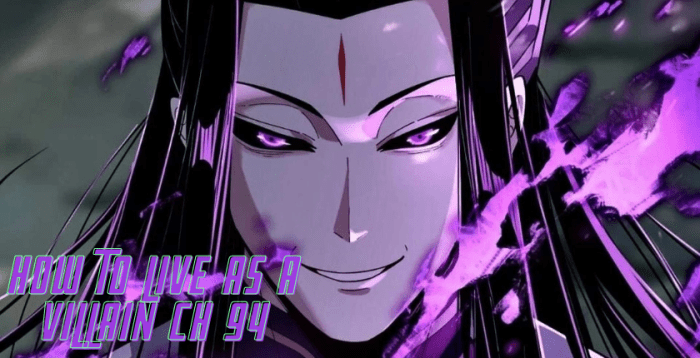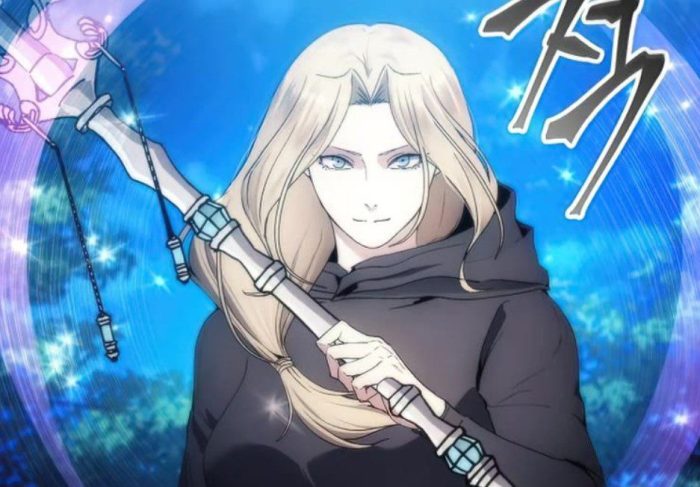
How to live as a villain ch 94 – In “How to Live as a Villain Chapter 94,” we embark on a captivating journey into the shadowy world of villainy, where cunning strategies, complex motivations, and the boundaries of morality blur. Join us as we dissect the villain’s tactics, motivations, and the profound impact they have on the narrative and our understanding of good and evil.
Villainous Strategies and Tactics

Villains employ a diverse range of strategies and tactics to achieve their goals. These include manipulation, deception, intimidation, and violence.
Manipulation is a common tactic used by villains to control others. They may use flattery, promises, or threats to gain the trust and loyalty of their followers. For example, the villain in the chapter uses his charisma to charm and manipulate the protagonist, gaining her trust and using her to further his own agenda.
Deception
Deception is another key tactic used by villains. They may lie, cheat, or forge documents to deceive their opponents and gain an advantage. For example, the villain in the chapter uses a fake identity to infiltrate the protagonist’s organization, gaining access to sensitive information and sabotaging their plans.
Intimidation
Intimidation is a tactic used by villains to instill fear and obedience in their followers. They may use threats, violence, or other forms of coercion to keep their followers in line. For example, the villain in the chapter uses his reputation for violence to intimidate his followers, ensuring their loyalty and preventing them from betraying him.
Violence
Violence is a last resort for villains, but it is often used to achieve their goals. They may use violence to eliminate their enemies, intimidate their followers, or gain control of territory. For example, the villain in the chapter uses violence to kill the protagonist’s mentor, sending a clear message that he will not tolerate opposition.
The effectiveness of these tactics depends on the skill and cunning of the villain. When used effectively, these tactics can allow villains to achieve their goals and maintain control over their followers. However, these tactics can also backfire if they are not used carefully.
If villains become too reliant on manipulation or deception, they may lose the trust of their followers. If they use violence too often, they may alienate their followers and make themselves vulnerable to attack.
If you’re looking for a way to live life on the edge, check out how to live as a villain ch 94 . This chapter provides an in-depth guide on how to embrace your inner villain and make the most of your evil powers.
From mastering the art of deception to using your dark abilities for personal gain, this chapter has everything you need to become a successful villain. So if you’re ready to take your villainy to the next level, be sure to check out how to live as a villain ch 94.
Character Development and Motivations
The chapter delves deeper into the psyche of the villain, exploring the intricate web of motivations that drive their actions and shape their personality. Various factors have molded them into the formidable antagonist they have become.
The Scars of the Past
The villain’s childhood experiences have left an indelible mark on their soul. Witnessing firsthand the cruelty and injustice of the world has instilled in them a deep-seated resentment and a desire for vengeance. These past traumas have fueled their determination to right the wrongs they have endured, even if it means resorting to questionable methods.
The Pursuit of Power
A thirst for power is another driving force behind the villain’s actions. They believe that by acquiring absolute authority, they can reshape the world according to their own vision. This desire for control stems from a deep-seated insecurity and a need to compensate for their perceived inadequacies.
The Corruption of Good Intentions
The villain’s journey was not always one of darkness. Once, they may have harbored noble aspirations, but the harsh realities of life have corrupted their ideals. The weight of past failures and betrayals has eroded their moral compass, leading them down a path of self-destruction and villainy.
If you’re a fan of action-packed, revenge-driven stories, then you’ll definitely want to check out how to live as a villain ch 94 . This web novel follows the story of a young man who is betrayed by his friends and family.
He vows to get revenge on those who wronged him, and he’ll stop at nothing to achieve his goals. With its intense action, complex characters, and satisfying revenge plot, how to live as a villain ch 94 is a must-read for fans of the genre.
Ethical Implications and Moral Ambiguity

The chapter delves into the complex ethical implications of the villain’s actions, exploring the moral ambiguity surrounding their motivations and behavior. It challenges the boundaries between good and evil, blurring the lines in this context.
If you’re looking for a great read, check out how to live as a villain ch 94 . It’s a gripping story that will keep you on the edge of your seat. I highly recommend it to anyone who enjoys a good villain story.
The Villain’s Intentions
- The villain’s intentions are shrouded in secrecy, making it difficult to determine their true motives. Their actions may appear malicious, but their ultimate goal remains unclear.
- Their motivations may stem from personal grievances, a desire for power, or a twisted sense of justice. Understanding their motivations is crucial for unraveling the moral complexity of their character.
The Boundaries of Good and Evil
- The chapter blurs the boundaries between good and evil, presenting characters who defy easy categorization. The villain’s actions may have both positive and negative consequences, making it difficult to label them as purely evil.
- The heroes, on the other hand, may resort to questionable tactics in their pursuit of justice, raising ethical concerns about their own actions.
The Role of Society
- Society plays a role in shaping the villain’s moral ambiguity. Their actions may be influenced by societal norms, injustices, or a lack of opportunities.
- The chapter explores the ways in which society can contribute to the creation of villains and the moral dilemmas they face.
Impact on the Narrative and Plot

The villain’s actions serve as a catalyst for conflict and drive the story forward. Their presence creates obstacles and challenges for the protagonist, escalating the tension and propelling the narrative.
Their schemes and machinations shape the course of events, leading to unexpected twists and turns. The consequences of their actions reverberate throughout the story, influencing the choices and destinies of other characters.
Consequences of the Villain’s Actions
- Alteration of the protagonist’s journey:The villain’s actions can force the protagonist to adapt their plans and confront unexpected obstacles, leading to a more complex and nuanced character arc.
- Creation of moral dilemmas:The protagonist may be faced with ethical choices as they navigate the consequences of the villain’s actions, shaping their moral compass and beliefs.
- Unveiling of hidden truths:The villain’s pursuit of their goals may uncover secrets and hidden truths, shedding light on the complexities of the narrative and characters.
- Escalation of conflict:The villain’s actions can intensify the conflict, leading to a climactic confrontation or a series of escalating challenges for the protagonist.
- Impact on the overall tone:The villain’s presence and actions can set the tone for the narrative, creating a sense of suspense, fear, or moral ambiguity.
Symbolism and Metaphors: How To Live As A Villain Ch 94
Throughout the chapter, the author employs a rich tapestry of symbolism and metaphors to delineate the villain’s character and motivations. These literary devices not only enhance the narrative’s vividness but also convey profound themes and messages that resonate with the reader.
The Black Rose
The black rose, a recurring motif in the chapter, symbolizes the villain’s complex and contradictory nature. Its beauty and fragrance hint at their alluring charm, while its thorns represent their capacity for ruthlessness and deception. The rose’s duality mirrors the villain’s struggle between their desire for acceptance and their embrace of darkness.
The Shadow
The shadow, which follows the villain throughout their journey, represents their repressed emotions and inner turmoil. It serves as a constant reminder of their past sins and the consequences of their actions. The shadow’s pursuit symbolizes the villain’s inability to escape their own darkness, even as they strive for redemption.
The Serpent, How to live as a villain ch 94
The serpent, a creature associated with both wisdom and temptation, appears in several guises throughout the chapter. It embodies the villain’s cunning and their ability to manipulate others. The serpent’s presence also hints at the villain’s temptation to embrace their darker impulses and succumb to their own desires.
Conclusion
Through the exploration of symbolism, metaphors, and ethical implications, “How to Live as a Villain Chapter 94” invites us to question our own moral compasses and the complexities of human nature. It’s a thought-provoking chapter that leaves us pondering the nature of evil and the choices we make in the face of darkness.
Question Bank
What strategies do villains employ in Chapter 94?
The villains in Chapter 94 use various strategies, including manipulation, deception, and intimidation, to achieve their goals.
How does the villain’s character develop in this chapter?
The villain’s motivations and personality are explored in depth, revealing the complexities and influences that shape their actions.
What ethical dilemmas are raised by the villain’s actions?
The chapter examines the ethical implications of the villain’s choices, blurring the lines between good and evil and prompting us to question our own moral beliefs.





